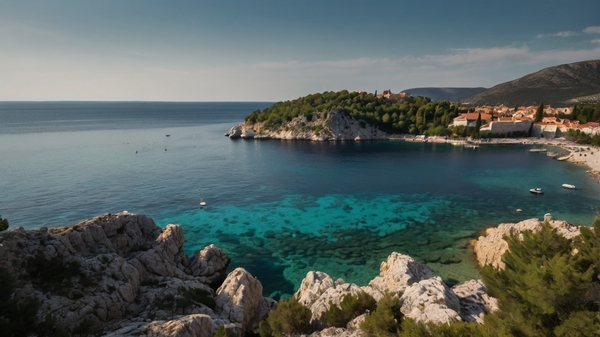Published on
August 11, 2025 |
Poland, Austria, Germany, and Slovenia have played a crucial role in Croatia’s tourism success in 2025, driving significant visitor numbers despite a slight decline in July. The first seven months of the year saw a 2% increase in both tourist arrivals and overnight stays, highlighting the country’s ongoing appeal as a top European destination. While July experienced a minor setback with a 2% decrease in visitors compared to the same month in 2024, the steady growth in foreign tourism—especially from these key markets—has ensured that Croatia remains on track for another successful year. The resilience of Croatia’s tourism industry, driven by these countries, is evident in the overall positive year-to-date performance.
Though the figures might seem a bit weaker, Croatia’s tourism landscape continues to be dominated by international visitors. Of the total arrivals, nearly 4.2 million were foreign tourists, a slight decrease of 2%. Foreign guests also contributed to 26 million overnight stays, a 1% decrease from last year. On the other hand, domestic tourism showed a minor decrease as well. Croatian residents made up 429,000 visitors, who collectively spent 3.3 million nights in the country, representing a 1% reduction in both arrivals and overnight stays.
Looking at the broader picture, however, Croatia’s tourism performance for the first seven months of 2025 has been encouraging. From January to July, the country saw an overall 2% increase in both tourist arrivals and overnight stays. The first seven months of the year saw 12.2 million visitors, contributing to 58.7 million overnight stays. This marks steady growth, signaling Croatia’s ongoing popularity as a tourist destination.
International tourists continued to drive these numbers. There were 10.3 million foreign visitors, reflecting a 1% growth in arrivals. These visitors recorded 51.4 million overnight stays, also a 1% increase compared to the same period in 2024. Domestic tourism also showed strong signs of growth, with 1.8 million local tourists—a significant 8% increase. These travelers spent nearly 7.3 million nights, which is a 6% rise from the previous year.
Accommodations remain an essential aspect of Croatia’s tourism sector. Commercial accommodations, such as hotels, resorts, and private rentals, accounted for 86% of overnight stays. Non-commercial accommodations, including private homes and informal lodging, made up 12%, with nautical accommodations representing 2% of the total.
In terms of accommodation types, household facilities saw the highest number of overnight stays, totaling 12.3 million. However, this figure represented a 2.3% decline compared to the previous year. Campsites also saw a slight drop of 1.1%, with 5.7 million overnight stays recorded. Interestingly, hotels recorded the only increase, with over 4.8 million overnight stays, marking a 2.3% rise from 2024.
Regionally, the most popular destinations for tourists were Istria, Split-Dalmatia County, and Kvarner. These areas continue to attract a significant share of visitors due to their natural beauty, cultural richness, and historical landmarks. Germany remains the largest source of foreign tourists, followed by Slovenia. Croatian visitors also play a crucial role in sustaining the country’s tourism economy, ranking third in terms of overnight stays.
At present, over one million tourists are still in Croatia. The majority of them come from Germany, followed by Slovenia, Austria, Poland, the Czech Republic, and the Netherlands. These tourists are concentrated in the popular regions of Istria, Split-Dalmatia, and Primorje-Gorski Kotar counties.
While the drop in July visitor numbers might have raised concerns, the overall picture for Croatia’s tourism in 2025 remains promising. The 2% growth in arrivals and overnight stays from January to July indicates that Croatia continues to be a preferred destination for travelers worldwide. The steady increase in both foreign and domestic tourism is an encouraging sign for the country’s economic recovery and growth.
The tourism sector’s resilience is evident, with 2025 proving to be another successful year for Croatia. Even with the slight dip in July, the rise in hotel stays and the increase in domestic tourism show that the country’s tourism industry remains on a positive trajectory. With the peak season continuing, Croatia’s tourism sector is well-positioned to finish the year strong, further solidifying its status as a top European destination.
Poland, Austria, Germany, and Slovenia have been key contributors to Croatia’s tourism success in 2025, driving growth despite a slight dip in July. The year-to-date figures show a positive trend, with continued growth in both arrivals and overnight stays.
In conclusion, Croatia’s tourism industry is thriving in 2025, with consistent growth and a solid rebound from any setbacks. The minor decline in July is outweighed by the overall increase in visitors and overnight stays, suggesting that the country remains a highly attractive destination for both international and domestic tourists. As the year progresses, Croatia’s tourism prospects continue to look bright.
